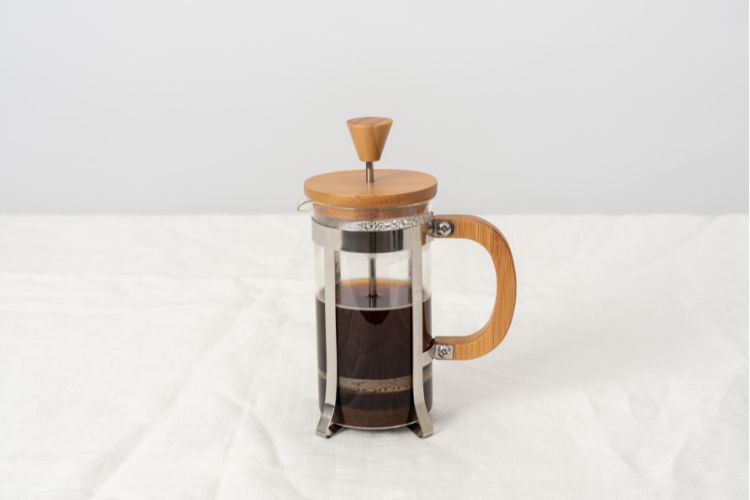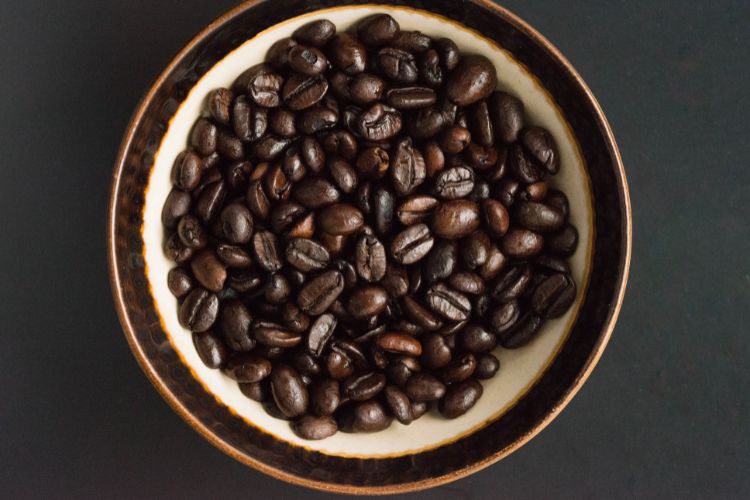How Much Caffeine is in Colombian Coffee?
Coffee drinkers often wonder how much caffeine is in Colombian coffee, given how smooth and energizing it is.
The answer isn’t one-size-fits-all, as caffeine levels depend on the type of bean, roast, and brewing method.
What we do know is that Colombia’s mountains and tropical climate create ideal conditions for Arabica beans. These beans are known for bright acidity, medium body, and flavors ranging from chocolate to hazelnut.
The Coffee Triangle—encompassing regions like Huila, Caldas, and Risaralda—has shaped café culture not only in Colombia but also worldwide.
From the aroma of freshly ground Arabica coffee to the balanced taste in your cup, Colombian coffees stand out. To understand why, it helps to look closer at caffeine itself and how it works in coffee.
Understanding Caffeine in Coffee
Caffeine is the little spark inside every coffee bean. It’s what keeps coffee drinkers coming back—not just for the flavor, but for the way it makes the body and mind react.
Colombian Arabica beans deliver this lift more gently than Robusta coffee beans, which explains their wide appeal. Here’s how caffeine usually works in your cup:
- Boosts alertness: Helps you focus, whether you’re at work or simply trying to start the day.
- Improves mood: Many people feel calmer and more positive after they drink coffee.
- Increases energy: Gives that quick lift without needing dietary supplements.
So while caffeine content matters, the real story is how it feels in the cup: Colombian coffee offers a smoother experience that gives you a boost without the harsh edge.

Colombian Coffee Basics
Colombian coffee owes its reputation to the land itself. The Andes provide high-altitude slopes, where cooler air and fertile volcanic soils slow ripening just enough to give Arabica beans their bright acidity, medium body, and layered aroma.
Add in the country’s tropical climate, and you’ve got conditions that many call the gold standard for growing coffee.
The varieties are just as fascinating. Castillo thrives with resilience, Caturra charms with balanced flavor, Typica carries history in every bean, and the prized Gesha varietal offers a delicate, complex cup that coffee drinkers around the world chase after.
The heart of it all lies in regions like Huila, Cauca, Caldas, Tolima, Antioquia, and Risaralda—areas known collectively as the Coffee Triangle.
Here, farming practices are part of daily life, and café culture feels woven into every town. Thanks to the Juan Valdez trademark, Colombian Arabica coffee became more than a crop. It grew into a global symbol of quality.
Average Caffeine Content in Colombian Coffee
When people ask about caffeine levels in Colombian coffee, they’re usually thinking of Arabica beans.
On average, Colombian Arabica coffee holds about 65–120 mg of caffeine in an eight-ounce cup. That’s moderate compared to Robusta beans, which can range from 90–150 mg in the same serving size.
Compared to other origins, Colombian coffees sit comfortably in the middle:
- Tanzanian Peaberry has slightly higher caffeine.
- Yemen Mocha Mattari offers rich flavors with similar caffeine ranges.
- Guatemalan beans are balanced and close to Colombian levels.
- Kona beans are often milder with lower caffeine content.
- Mocha Java varies depending on whether Robusta beans are included.
A standout in Colombia is the supremo varietal, prized for flavor intensity and smooth body. Supremo mirrors other arabica coffee levels, showing that taste and aroma matter as much as caffeine content.
How Brewing Method Changes Caffeine Levels
The same Colombian Arabica beans can feel different depending on the brew. Caffeine extraction depends on grind size, brewing time, and water contact.
Drip-brewed coffee averages 95–120 mg in an eight-ounce cup, while a single espresso shot has 60–75 mg in one ounce.
Espresso is more concentrated, but drip delivers more caffeine overall. Instant coffee usually holds 60–80 mg, while cold brew often exceeds 150 mg thanks to its long steeping process.

Other methods have their own caffeine signatures:
- French press: full-bodied cup, 80–210 mg per serving.
- Aeropress: versatile, usually 70–120 mg depending on brew time.
- Moka pot: strong and concentrated, about 90–120 mg per small cup.
- Pour-over: clean and bright, 75–130 mg depending on technique.
- Keurig K-Cup: varies widely by packaging and roast level, generally 75–100 mg.
Grind size and brewing time matter. Finer grinds extract faster, pulling more caffeine into the cup. Longer steeping, like with cold brew, usually means higher caffeine content.
So, arabica drip-brewed coffee often feels smoother, while an espresso machine produces smaller, sharper bursts of caffeine in concentrated form.
Roast Level and Caffeine
Roast level is one of the most misunderstood parts of coffee. Many people assume a darker bean means more caffeine, but the difference is smaller than most think.
What actually shifts is the flavor profile, body, and aroma. Let’s look at how each roast plays out.
1. Light Roasts
Light roasts keep more density in each bean, which means that by volume, they can hold slightly higher caffeine content.
They also highlight bright acidity, floral aromas, and a crisp finish. For Colombian arabica coffee, light roasts often showcase citrus or fruity notes layered over a clean body.
2. Medium Roasts
Medium roasts balance flavor and caffeine levels. They typically feature chocolate and hazelnut tones, medium body, and a well-rounded aroma.
This is the roast level most often used for Colombian supremo beans, where flavor intensity meets smooth drinkability without sacrificing caffeine content.
3. Dark Roasts
Dark roasts lose density as the beans expand during longer roasting. Per scoop, you may end up with less caffeine simply because the grounds are lighter.
However, per bean, the caffeine remains fairly steady. What dark roasts excel at is body: smoky, bold, and full-flavored, often muting the bright acidity that defines many Colombian coffees.

Decaf Colombian Coffee
Decaf often gets treated like the odd one out, but Colombian coffees prove it can still taste great.
The process starts with the removal of caffeine from green coffee beans, usually through water-based or CO₂ methods.
What’s left is the bean’s original flavor profile, minus most of the stimulant. A cup of decaf Arabica beans from Colombia usually holds only 2–10 mg of caffeine per serving—tiny compared to the 95–120 mg in regular brewed coffee.
It’s not entirely caffeine-free, but it’s close enough for anyone trying to cut back without giving up the ritual.
The reason decaf Colombian coffee remains popular is simple: you still get the medium body, chocolate notes, and smooth aroma that define arabica coffee from regions like Huila or Cauca.
For many coffee drinkers, it’s the chance to enjoy a café-style cup at night without losing sleep.
Comparing Colombian Coffee to Other Coffees
So, how does Colombian coffee stack up against the rest of the world? How about a quick round of coffee matchmaking. Let’s start with the obvious: Colombian Arabica beans vs Robusta beans.
Robusta is high in caffeine—stronger, heavier, and often more bitter. Colombian Arabica coffee, on the other hand, leans smoother, with bright acidity and flavor notes like chocolate or hazelnut.
Now let’s look at other Arabica classics. Ethiopia brings floral complexity, while Yemen mocha mattari offers deep, wine-like flavors.
Kona beans from Hawaii are mellow and sweet, while Guatemalan coffee is rich and full-bodied. Colombian Arabica sits right in the middle: versatile, balanced, and approachable without being bland.
For varietals, the Colombian Supremo is known for big beans and dependable quality. Compare it to Gesha, famous for its delicate, tea-like character, or other varietal coffee selections that focus on niche flavors.
Supremo wins on consistency, Gesha wins on intrigue—you decide which mood you’re in.
Brewing Colombian Coffee at Home
If you want to enjoy Colombian coffee at home, the options can feel endless—but that’s half the fun. The key is choosing the right format, then brewing it in a way that highlights the flavor profile.
Popular formats include:
- Whole bean: Best for freshness, especially if you grind before brewing.
- Pre-ground: Convenient, though it loses aroma faster.
- Coffee bags: Great for grocery & gourmet food shelves.
- Keurig K-Cup: Single-serve brewing machines keep it quick, though flavor intensity may vary.
Brewing tips that work well for Colombian arabica beans:
- French press: Brings out body and chocolate notes.
- Pour-over: Highlights bright acidity and clean aroma.
- Espresso machine: Packs flavor intensity into small servings.
Pairing? A splash of Coffee Mate Coffee Creamer balances acidity. On the other hand, a little bit of milk or nut-based creamers softens edges without masking the aroma.
The Final Scoop
So, how much caffeine in Colombian coffee can you expect? The answer depends on the bean, roast, brewing method, and even the serving size.
Colombian arabica coffee typically delivers moderate caffeine levels, around 65–120 mg per an 8-ounce cup, making it approachable for most coffee drinkers.
More than the numbers, though, it’s the balanced body, bright acidity, and chocolate-hazelnut flavor profile that make Colombian coffees shine.
Whether you brew with a French press, moka pot, or espresso machine, the best choice is the one that matches your taste—and your caffeine comfort zone.
Enjoy it with intention, and let the cup reflect both flavor and mood.


